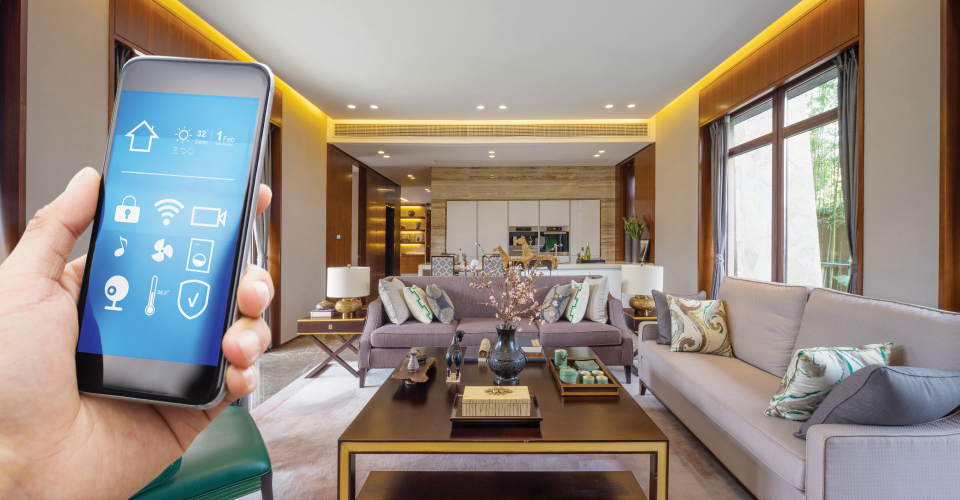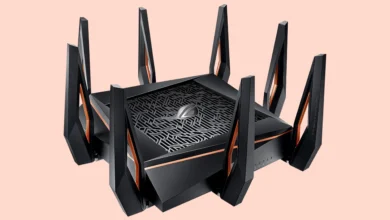Transform Your Living Space with Smart Home Devices

In recent years, smart home devices have revolutionized the way we interact with our homes. From voice assistants that help manage daily tasks to smart lights and thermostats that adjust according to your preferences, the possibilities for improving convenience and comfort are endless. But what exactly makes a home “smart,” and how can these devices benefit you? In this blog post, we’ll explore the advantages of smart home devices and why integrating them into your home could be a game-changer.
What Are Smart Home Devices?
Smart home devices are electronic gadgets or systems that connect to the internet and can be controlled remotely through a smartphone, tablet, or voice assistant. These devices use Wi-Fi, Bluetooth, or Zigbee to communicate with each other, creating a network of interconnected devices within your home. Examples of popular smart home devices include smart speakers, lights, thermostats, locks, cameras, and appliances.
The Key Benefits of Smart Home Devices
1. Convenience at Your Fingertips
Smart home devices are designed to make your life easier. With just a tap on your phone or a simple voice command, you can control your home environment. Want to adjust the temperature in your living room without getting up from the couch? Smart thermostats, like the Nest Learning Thermostat, allow you to do just that. You can also set up schedules to automate certain tasks, like turning on the lights when you arrive home or setting the coffee maker to brew your coffee first thing in the morning.
2. Increased Energy Efficiency
Smart home devices are not only about comfort and convenience; they can also help you save money and reduce your environmental impact. Smart thermostats, such as the Ecobee or Nest, can learn your preferences and adjust the temperature automatically, ensuring that your heating and cooling systems are used efficiently. Similarly, smart lights, which can be scheduled to turn off when not in use, save energy and reduce electricity bills.
3. Enhanced Security
With the rise of smart security devices, it’s easier than ever to monitor your home while you’re away. Smart cameras and doorbell cameras, such as Ring and Nest Cam, provide real-time video footage of your home’s exterior and can send alerts to your phone whenever motion is detected. You can also lock or unlock your doors remotely using smart locks, adding an extra layer of security to your home. Furthermore, many smart security systems can be integrated with your smart speakers to provide voice notifications or alerts.
4. Seamless Home Automation
One of the most exciting features of smart home devices is the ability to automate various tasks throughout your home. For instance, you can set up “scenes” where multiple devices work together to create the perfect ambiance. For example, with a voice command like “Goodnight,” your smart lights can dim, your thermostat can adjust to a cooler temperature, and your security system can be armed. Automation can make your home feel more responsive to your needs and reduce the number of manual tasks you need to perform.
5. Voice Control for Hands-Free Operation
With the integration of voice assistants like Amazon Alexa, Google Assistant, and Apple Siri, controlling your smart home devices has never been easier. Whether you want to adjust the volume of your smart speaker, control the lights, or check the weather, voice commands provide hands-free operation. This is especially useful when your hands are full or when you want to control multiple devices simultaneously with a simple phrase.
Popular Smart Home Devices to Consider
Smart Speakers and Voice Assistants
Smart speakers like the Amazon Echo or Google Nest Hub act as the central control hub for your smart home. These devices can play music, answer questions, set reminders, control other smart devices, and more—all via voice commands. They’re also equipped with virtual assistants that can help with everything from setting alarms to telling you the news.
Smart Thermostats
Gone are the days of manually adjusting your thermostat. With smart thermostats like the Nest Learning Thermostat or Ecobee SmartThermostat, you can control your home’s temperature from anywhere. These devices learn your habits and can adjust the temperature based on your schedule, helping you save energy and money in the process.
Smart Lights
Smart bulbs, such as Philips Hue and LIFX, allow you to adjust the color and brightness of your lighting remotely. You can also set schedules for your lights to turn on and off, or even sync them with your favorite music or TV shows for a more immersive experience.
Smart Security Cameras
Smart cameras like Ring or Arlo provide real-time monitoring of your home. They can detect motion, send alerts, and even allow you to view video feeds on your phone or computer. Some models also offer two-way audio, so you can communicate with visitors or intruders through the camera.
How to Get Started with Smart Home Devices
The beauty of smart home devices is that you don’t have to go all-in right away. Start small by selecting one or two devices that can have an immediate impact on your daily life. For example, try adding a smart speaker to your home to experience the convenience of voice control. From there, you can gradually expand your collection of smart devices, like adding smart lights or a security system.
When setting up your smart devices, make sure your home Wi-Fi network is secure and capable of handling multiple connected devices. It’s also important to check compatibility between devices to ensure they work seamlessly together. Many devices can be controlled through a central app, making it easier to manage everything from one place.
Conclusion
Smart home devices are no longer a futuristic dream but a practical reality that can greatly enhance the way you live. By providing convenience, energy efficiency, improved security, and greater automation, these devices have the potential to transform your home into a smarter, more connected space. Whether you’re looking to automate your daily tasks, improve your home’s security, or reduce your energy bills, smart home devices can help you achieve all of that and more.



